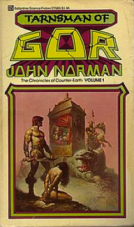Contributing Blogger: Mary Hedengren
Last week we held our last weekly workshop of the semester and of the school year. Bittersweet, of course, but it’s nice to take a moment and think about the lessons from the UWC’s adventures in non-tutoring. At our 2013 Symposium, a couple of people asked me about what’s worked and what hasn’t in our Friday afternoon workshop series. Here are the main logistical points that I’ve learned.
Advertise, advertise, advertise:
Start early, and find every possible way to advertise. Try to get the word out to everyone. I tried to pitch the workshops when our consultants visited classrooms, and we made sure that there were announcements for our workshops posted around our writing center as well as on bulletin boards around campus. But you probably need fewer physical fliers than you think you do; use newsletters, department websites and electronic announcement boards to get the word out.
Do your homework:
When figuring out what topics to offer for a workshop, survey students or instructors, see what genres or types of writing are most frequent at your writing center, and ask around the staff to see what people are interested in teaching. Appealing topics can be wonderful.
Get support:
I soon realized that I couldn’t lead every Friday workshop, and I couldn’t even necessarily attend every workshop, so I built a Google Doc with some very talented folk who were willing to help out for a week here and there. Some of them were experienced counselors who loved talking about resumes and cover letters. Some were passionate about grammar. Using the strengths of our writing center staff created better workshops and let the staff really shine.
Branch out:
Along with getting support within your center, you can make connections with other student services. We started partnering with the library’s workshops to talk about how to find evidence and then move from evidence towards an argument. We both have the same goals, and we can refer students to each other.
Don’t sweat the numbers:
Sometimes you’ll have 30 people show up for a workshop and sometimes there will be no one at all. While these numbers can help guide your decisions about what workshops are most useful, don’t read too much into them. Sometimes it’s just a busy week for students. Sometimes there’s a football game. There are a lot of reasons why a session might be less well attended, so thinking broadly.
But do keep track of them:
We started letting students “pre-register” for workshops online, which gave us a rough sense of how many people to expect. Also, we kept track of how many people actually showed up. This let us see which workshops were most popular and it gives us another metric to share in our annual report to the college. Next year, we want to integrate our workshops into our standard tutoring intake system so we can know what sorts of students we’re serving.
One year doesn’t make me an expert, but I do feel as though I’ve learned a lot this past year. Has your writing center produced in-house workshops? What’s been most effective for you? I’d love to know so that next fall, when our workshops start again, I’ll be prepared to learn even more this year.
Mary Hedengren is getting her rhetoric PhD at the University of Texas at Austin. Her research has focused on multicultural writing practices, writing in the disciplines, and writing as an indication of national identity. In addition to blogging, she’s an associate editor at Praxis and is currently the assistant director at UT’s Undergraduate Writing Center.



